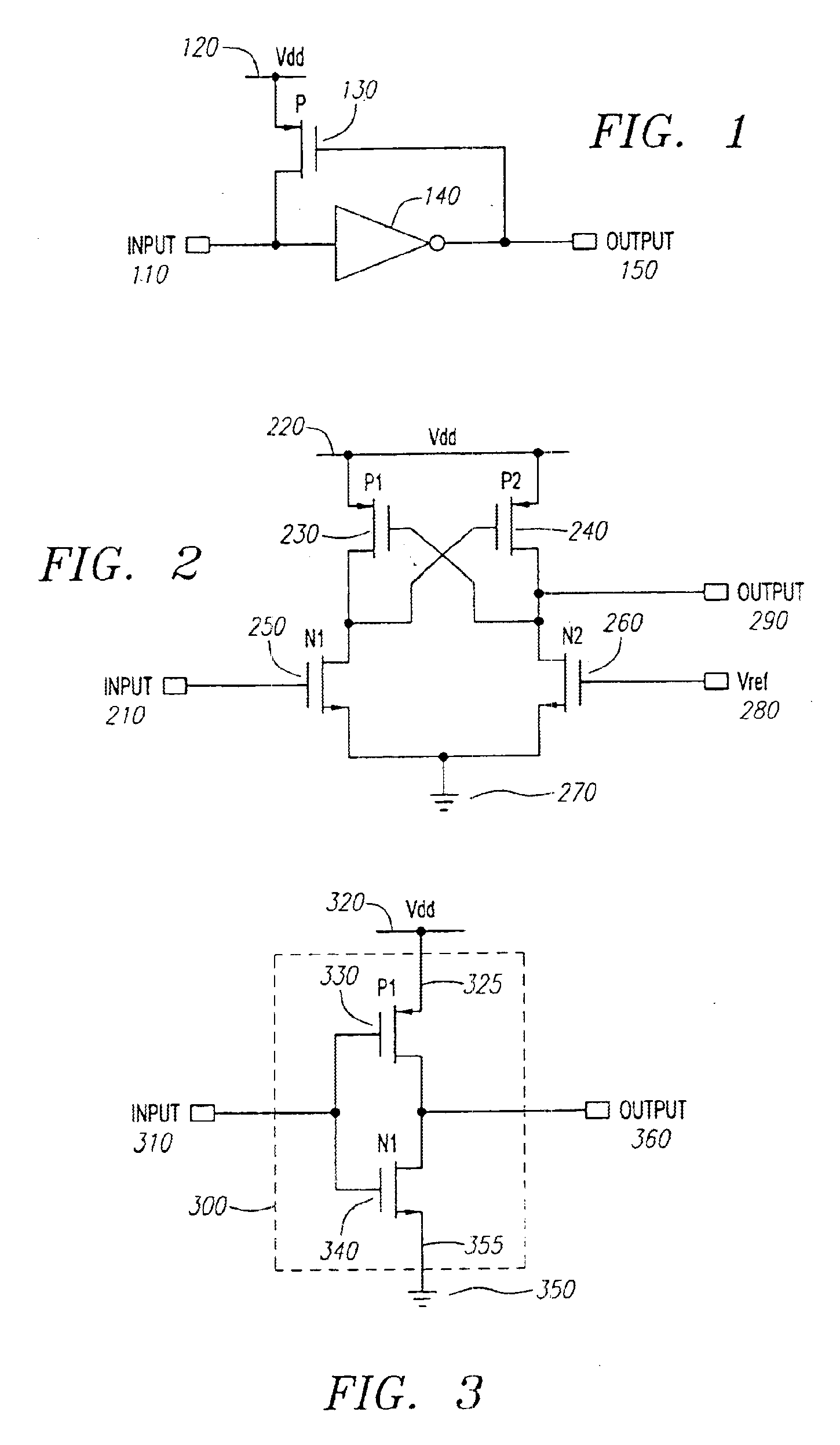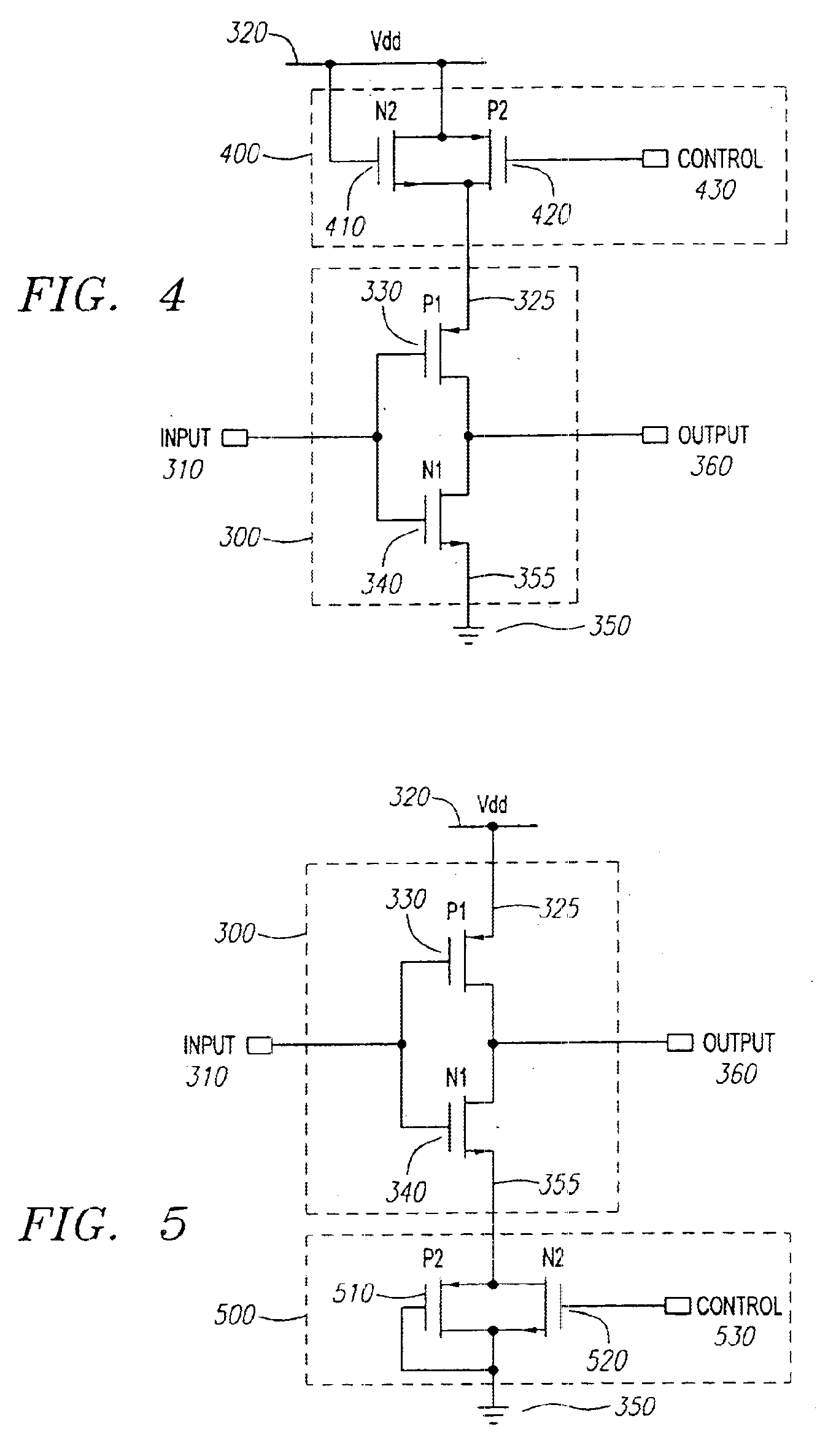Low-power voltage modulation circuit for pass devices
a low-power voltage and voltage modulation technology, applied in the field of semiconductor devices, can solve the problems of reducing high signal, pmos transistors that are implemented with switches b>40/b>, and pmos transistors that are also affected by disadvantages, so as to achieve easy and optimal compensation, without increasing the power dissipation of semiconductor devices
- Summary
- Abstract
- Description
- Claims
- Application Information
AI Technical Summary
Benefits of technology
Problems solved by technology
Method used
Image
Examples
Embodiment Construction
>[0030]FIG. 8 is a depiction of a voltage modulation circuit connected to a CMOS NOR gate, according to an embodiment of the invention.
[0031]FIG. 9 is a depiction of a voltage modulation circuit having a control signal connected to both the converter and the bypass circuit, according to an embodiment of the invention.
[0032]FIG. 10 is a depiction of a voltage modulation circuit which derives the control signal from the inverse of the output of the target circuit, according to an embodiment of the invention.
[0033]FIG. 11 is a graph of the relationship between the length of a transistor and the threshold voltage of the transistor.
[0034]FIG. 12 is a depiction of a reconfigurable device.
DETAILED DESCRIPTION OF THE PREFERRED EMBODIMENTS
[0035]Turning to FIG. 3, an example CMOS logic device is shown. The logic device of FIG. 3 is an inverter 300, but those skilled in the art will appreciate that the embodiments disclosed herein can be used with any standard logic devices or any combinations...
PUM
 Login to View More
Login to View More Abstract
Description
Claims
Application Information
 Login to View More
Login to View More - R&D
- Intellectual Property
- Life Sciences
- Materials
- Tech Scout
- Unparalleled Data Quality
- Higher Quality Content
- 60% Fewer Hallucinations
Browse by: Latest US Patents, China's latest patents, Technical Efficacy Thesaurus, Application Domain, Technology Topic, Popular Technical Reports.
© 2025 PatSnap. All rights reserved.Legal|Privacy policy|Modern Slavery Act Transparency Statement|Sitemap|About US| Contact US: help@patsnap.com



